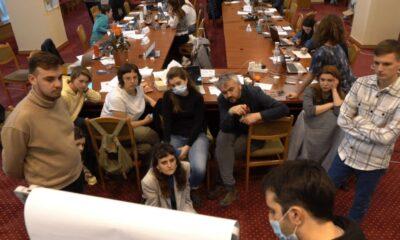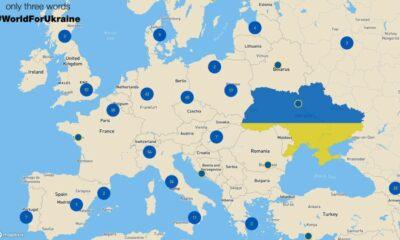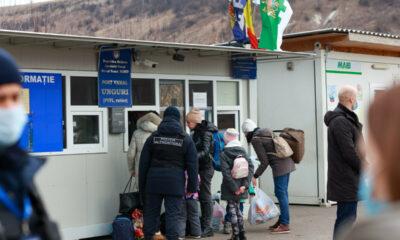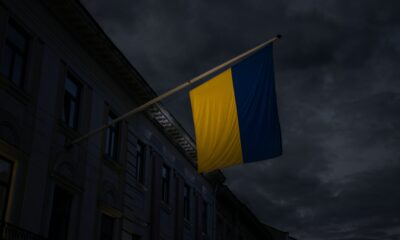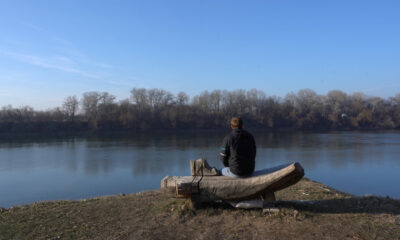Society
Could you write about your life?
Reading Time: 5 minutesHow to turn your life experiences into a book, by Jo Parfitt
By Jo Parfitt
How to turn your life experiences into a book…
Do you write a diary or holiday journal? Do your friends and family tell you they love to read your emails or that you have a knack with words? Do your children beg you to tell them about your childhood, or would you like to write about the life of one of your relatives? Or maybe there’s someone in your family whose life is so rich and varied that you simply must put it down on paper! Those moments that have your friends in hysterics, or the times you’ve broken down… all are worthy of being on paper. Chances are, especially if you’re living the expat life, that you’ve got plenty of stories up your sleeve. So why not put pen to paper?
You might write for different reasons: for personal fulfilment, or to present a memento to your children. You might write from a place of pain, or you might retrospectively, sharing the lessons you’ve learnt along the way.
Now, before your inner critic wakes up (‘me, a writer?’), you’ll be pleased to know that writing about life experiences is easier than you think.
Before you start it is a good idea to read other books in your genre to see how experts do it. See how writers notice what epitomises local life and culture. Recognise that the wise writer gives generalisations a wide berth. Look, instead for fresh descriptions and new insights. Listen to the sounds of the country and the way the people use its language. Smell the smells, taste the tastes and find new ways to say old things.
Though you may be writing non-fiction, or real life, rather than a made up story, you still want your reader to feel compelled to keep turning pages. To do this you either need to be a very entertaining, funny or superb writer or you need a plot with pace and character. You can’t invent a plot when you are writing about what really happened to you, but you can spot the themes and stories that have arisen and see where your plots are. Maybe you longed to have a child, had difficulty conceiving and ended up having a child, adopting or deciding to fly an aeroplane instead. Maybe you wanted to get married and ended up happily single? Maybe you were looking for a job and found one, wanted to start a business, and did so? Did you have a crisis that was resolved? Did you survive a trauma? Did you think you would never survive culture shock and then integrate happily? These are examples of plots.
In addition, your stories need to have real characters who walk and talk and do things. Like in fiction, some have walk on parts. Others have their own story, and like the subplots in a novel, we care about them too and want to know what happens to them. Tell your stories but remember some of your popular characters may have their stories too, each with their own plot.
If you have ambitions to write your story too, then I urge you to read other books in the same genre to see what works and what doesn’t. Notice how writers deal with the passing of time and chopping out whole swathes of it when nothing much happened in real life. Analyse what I call the ‘recipe’ or formula to see how they have crafted the book. Look out for their handling of the ‘ingredients’ of character, plot, action and style.
Take a look at this extract from my video below (video courtesy Expatriate Archive Centre; video taken by Jimmy Moya) about writing life story to find out more about how to get it right – and how to get it wrong!
Ten tips to writing great story:
1. Write!
Make writing integral to your day… It’s only through practice that you can become skilled enough to write a book that people will want to read. It doesn’t matter what you write – a diary, long letters or emails, funny sketches, satirical love poems, philosophical ramblings – as long as you are in the habit of putting pen to paper (and fingers to keyboard). Even 10 minutes of ‘free-writing’ (or stream-of-consciousness writing) will get the creative juices flowing.
2. Read!
This keeps you motivated and helps you see what works – and what doesn’t. Read newspapers and blogs. Read books that inspire and books that don’t. Get familiar with writers whose style you’d like to emulate. And for extra inspiration, read about writing! (Try Anne Lamott’s Bird by Bird, Natalie Goldberg’s Writing Down the Bones or Stephen King’s On Writing.)
3. Find your voice.
Be yourself on paper. Your natural style should feel real, not forced or contrived. Then be authentic, even vulnerable at times.
4. Write what you know…
Don’t worry about lack of experience at the start of your career. If you went pot-holing in Tenerife you write about that. If you’ve managed to unravel Italian bureaucracy, write about that too.
5. … but give it a new spin
The wise writer gives generalisations a wide berth. Look instead for fresh descriptions and new insights. Find new ways to tell that story.
6. Plot your plot!
Just a word, an idea, a memory or a photo can trigger a chain of ideas that can be turned into a compelling read.
7. Let your characters come alive.
Let us ‘meet’ those people that have inspired you to write. Readers want to be able to picture them and hear them speak. Let your reader care about your characters (whether that’s you or the people around you) and what happens to them.
8. Show, don’t tell.
Words like ‘amazing’, ‘wonderful’ and ‘breathtaking’ do nothing. Show us what that ‘amazing view’ looks like… Was it the colour of the sky? The enormous expanse ahead of you? The emotions it aroused?
9. Stay accessible.
Make your writing easy to read. Never use a long word where a short one will do. Cut superfluous words. Short sentences and paragraphs are usually best. Again, avoid clichés.
10. Write it all before you edit.
Write that ‘Shitty First Draft’ (as Anne Lamott calls it). This is not the time to be critical. And remember, you can always hire other people to polish your words.
A wonderful spinoff of writing life story is that, suddenly, everything that happens to you – from a traffic jam in a strange country to having a mid-life crisis in a foreign language – becomes material for a story. Your life becomes a novel, your experiences its chapters – and you are its protagonist.
—
Jo Parfitt is a journalist, teacher, editor and publisher and mentors others to write and publish their books. Jo has published 26 non-fiction books. She has lived in Dubai, Oman, Norway and is now based in The Hague, the Netherlands and specializes in inspiring and empowering people to write about what they know as memoir, articles or books. Jo travels extensively, running workshops and speaking at conferences. She is perhaps best known for her book: Career in Your Suitcase. In May 2010 she launched a home study program, comprising video, audio and workbook, based on her popular ‘Write Your Life Stories’ workshops. More info at www.joparfitt.com.
Society
“They are not needy, but they need help”. How Moldovan volunteers try to create a safe environment for the Ukrainian refugees
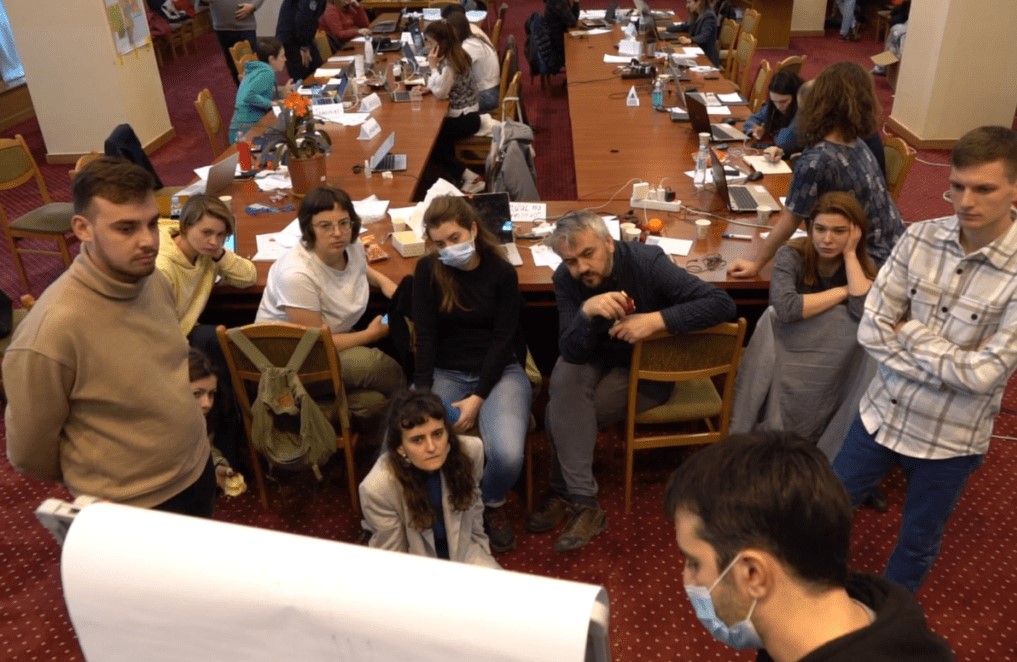
At the Government’s ground floor, the phones ring constantly, the laptop screens never reach standby. In one corner of the room there is a logistics planning meeting, someone has a call on Zoom with partners and donors, someone else finally managed to take a cookie and make some coffee. Everyone is exhausted and have sleepy red eyes, but the volunteers still have a lot of energy and dedication to help in creating a safe place for the Ukrainian refugees.
“It’s like a continuous bustle just so you won’t read the news. You get home sometimes and you don’t have time for news, and that somehow helps. It’s a kind of solidarity and mutual support,” says Vlada Ciobanu, volunteer responsible for communication and fundraising.
The volunteers group was formed from the very first day of war. A Facebook page was created, where all types of messages immediately started to flow: “I offer accommodation”, “I want to help”, “I want to get involved”, “Where can I bring the products?”, “I have a car and I can go to the customs”. Soon, the authorities also started asking for volunteers’ support. Now they all work together, coordinate activities and try to find solutions to the most difficult problems.
Is accommodation needed for 10, 200 or 800 people? Do you need transportation to the customs? Does anyone want to deliver 3 tons of apples and does not know where? Do you need medicine or mobile toilets? All these questions require prompt answers and actions. Blankets, sheets, diapers, hygiene products, food, clothes – people bring everything, and someone needs to quickly find ways of delivering them to those who need them.
Sometimes this collaboration is difficult, involves a lot of bureaucracy, and it can be difficult to get answers on time. “Republic of Moldova has never faced such a large influx of refugees and, probably because nobody thought this could happen, a mechanism of this kind of crisis has not been developed. Due to the absence of such a mechanism that the state should have created, we, the volunteers, intervened and tried to help in a practical way for the spontaneous and on the sport solutions of the problems,” mentions Ecaterina Luțișina, volunteer responsible for the refugees’ accommodation.
Ana Maria Popa, one of the founders of the group “Help Ukrainians in Moldova/SOS Українці Молдовa” says that the toughest thing is to find time and have a clear mind in managing different procedures, although things still happen somehow naturally. Everyone is ready to intervene and help, to take on more responsibilities and to act immediately when needed. The biggest challenges arise when it is necessary to accommodate large families, people with special needs, for which alternative solutions must be identified.
Goods and donations
The volunteers try to cope with the high flow of requests for both accommodation and products of all kinds. “It came to me as a shock and a panic when I found out that both mothers who are now in Ukraine, as well as those who found refuge in our country are losing their milk because of stress. We are trying to fill an enormous need for milk powder, for which the demand is high and the stocks are decreasing”, says Steliana, the volunteer responsible for the distribution of goods from the donation centers.
Several centers have been set up to collect donations in all regions of Chisinau, and volunteers are redirecting the goods to where the refugees are. A system for processing and monitoring donations has already been established, while the volunteer drivers take over the order only according to a unique code.
Volunteers from the collection centers also do the inventory – the donated goods and the distributed goods. The rest is transported to Vatra deposit, from where it is distributed to the placement centers where more than 50 refugees are housed.
When they want to donate goods, but they don’t know what would be needed, people are urged to put themselves in the position of refugees and ask themselves what would they need most if they wake up overnight and have to hurriedly pack their bags and run away. Steliana wants to emphasise that “these people are not needy, but these people need help. They did not choose to end up in this situation.”
Furthermore, the volunteer Cristina Sîrbu seeks to identify producers and negotiate prices for products needed by refugees, thus mediating the procurement process for NGOs with which she collaborates, such as Caritas, World Children’s Fund, Polish Solidarity Fund, Lifting hands, Peace Corps and others.
One of the challenges she is facing now is the identifying a mattress manufacturer in the West, because the Moldovan mattress manufacturer that has been helping so far no longer has polyurethane, a raw material usually imported from Russia and Ukraine.
Cristina also needs to find solutions for the needs of the volunteer groups – phones, laptops, gsm connection and internet for a good carrying out of activities.
Hate messages
The most difficult thing for the communication team is to manage the hate messages on the social networks, which started to appear more often. “Even if there is some sort of dissatisfaction from the Ukrainian refugees and those who offer help, we live now in a very diverse society, there are different kind of people, and we act very differently under stress,” said Vlada Ciobanu.
Translation by Cătălina Bîrsanu
Important
#WorldForUkraine – a map that shows the magnitude of the world’s actions against Russian aggression

The international community and volunteers from all over te world have launched #WorldForUkraine as a platform that shows the magnitude of the world’s actions against the Russian aggression. In a digital world – it is an interactive map of public support of Ukrainians under the hashtag #WorldForUkraine – rallies, flash mobs, protests around the world. In the physical dimension – it is your opportunity to take to the streets and declare: “No to Putin’s aggression, no to war.”
„Today, along with the political and military support, emotional connection with the civilized world and truthful information are extremely important for Ukraine. The power to do it is in your hands. Join the #WorldForUkraine project and contribute to the victorious battle against the bloodshed inflicted on Ukraine by the aggression of the Russian Federation”, says the „about the project” section of the platform.
Go to the streets — Tell people — Connect and Unite — Become POWERFUL
Volunteers have launched #WorldForUkraine as a platform that shows the magnitude of the world’s actions against Russian aggression. In digital world – it is an INTERACTIVE MAP of public support of Ukrainians worldforukraine.net under the hashtag #WorldForUkraine – rallies, flash mobs, protests around the world. In the physical dimension – it is your opportunity to take to the streets and declare: “No to Putin’s aggression, no to war.” There you may find information about past and future rallies in your city in support of Ukraine. This is a permanent platform for Ukrainian diaspora and people all over the world concerned about the situation in Ukraine.
So here’s a couple of things you could do yourself to help:
* if there is a political rally in your city, then participate in it and write about it on social media with geolocation and the hashtag #WorldForUkraine
* if there are no rallies nearby, organize one in support of Ukraine yourself, write about it on social media with geolocation adding the hashtag #WorldForUkraine
The map will add information about gathering by #WorldForUkraine AUTOMATICALLY
Your voice now stronger THAN ever
All rallies are already here: https://worldforukraine.net
Important
How is Moldova managing the big influx of Ukrainian refugees? The authorities’ plan, explained
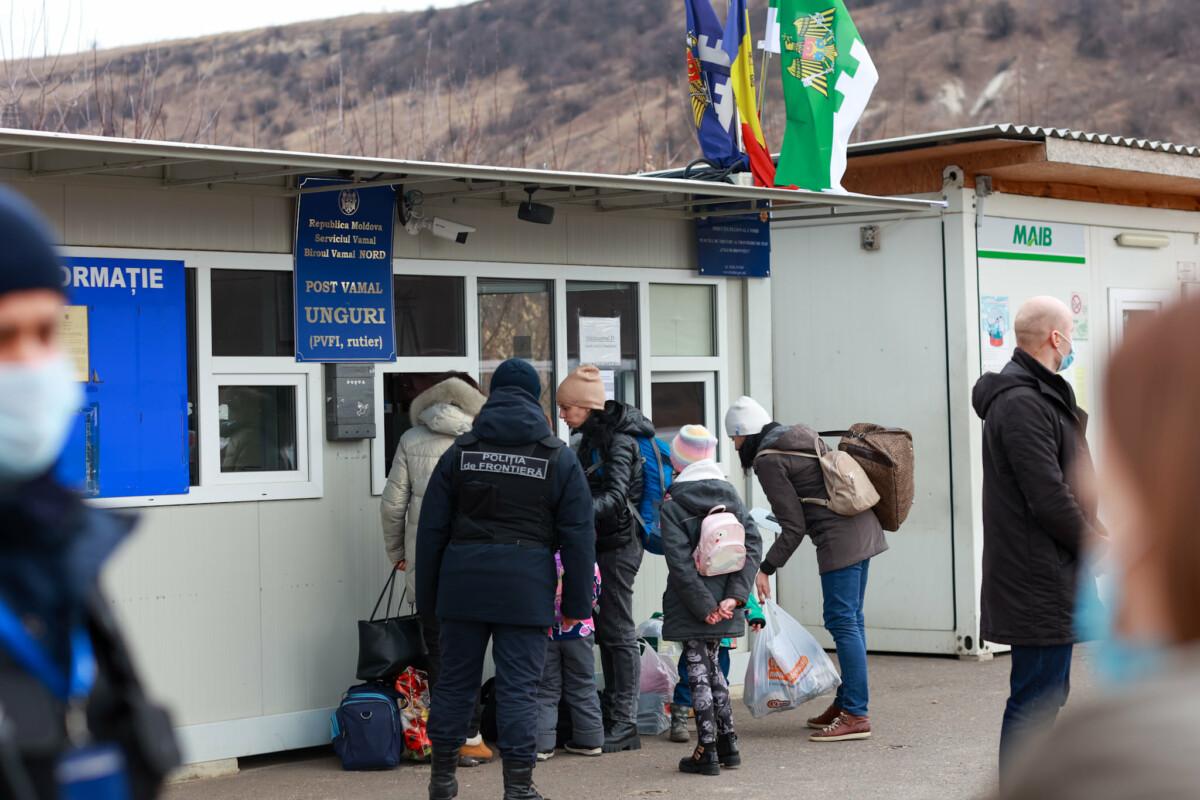
From 24th to 28th of February, 71 359 Ukrainian citizens entered the territory of Republic of Moldova. 33 173 of them left the country. As of this moment, there are 38 186 Ukrainian citizens in Moldova, who have arrived over the past 100 hours.
The Moldovan people and authorities have organized themselves quickly from the first day of war between Russia and Ukraine. However, in the event of a prolonged armed conflict and a continuous influx of Ukrainian refugees, the efforts and donations need to be efficiently managed. Thus, we inquired about Moldova’s long-term plan and the state’s capacity to receive, host, and treat a bigger number of refugees.
On February 26th, the Ministry of Labor and Social Protection of Moldova approved the Regulation of organization and functioning of the temporary Placement Center for refugees and the staffing and expenditure rules. According to the Regulation, the Centers will have the capacity of temporary hosting and feeding at least 20 persons, for a maximum of 3 months, with the possibility of extending this period. The Centers will also offer legal, social, psychological, and primary medical consultations to the refugees. The Center’s activity will be financed from budget allocations, under Article 19 of Provision no. 1 of the Exceptional Situations Commission from February 24th, 2022, and from other sources of funding that do not contravene applicable law.
The Ministry of Inner Affairs and the Government of Moldova facilitated the organization of the volunteers’ group “Moldova for Peace”. Its purpose is to receive, offer assistance and accommodation to the Ukrainian refugees. The group is still working on creating a structure, registering and contacting volunteers, etc. It does not activate under a legal umbrella.
Lilia Nenescu, one of the “Moldova for Peace” volunteers, said that the group consists of over 20 people. Other 1700 registered to volunteer by filling in this form, which is still available. The group consists of several departments:
The volunteers’ department. Its members act as fixers: they’re responsible for connecting the people in need of assistance with the appropriate department. Some of the volunteers are located in the customs points. “The Ministry of Inner Affairs sends us every day the list of the customs points where our assistance is needed, and we mobilize the volunteers”, says Lilia Nenescu.
The Goods Department manages all the goods donated by the Moldavian citizens. The donations are separated into categories: non-perishable foods and non-food supplies. The volunteers of this department sort the goods into packages to be distributed.
The Government intends to collect all the donations in four locations. The National Agency for Food Safety and the National Agency for Public Health will ensure mechanisms to confirm that all the deposited goods comply with safety and quality regulations.
The Service Department operates in 4 directions and needs the volunteer involvement of specialists in psychology, legal assistance (the majority of the refugees only have Ukrainian ID and birth certificates of their children); medical assistance; translation (a part of the refugees are not Ukrainian citizens).
According to Elena Mudrîi, the spokesperson of the Ministry of Health, so far there is no data about the number of Covid-19 positive refugees. She only mentioned two cases that needed outpatient medical assistance: a pregnant woman and the mother of a 4-day-old child.
The Accommodation Department. The volunteers are waiting for the centralized and updated information from the Ministry of Labor about the institutions offering accommodation, besides the houses offered by individuals.
The Transport Department consists of drivers organized in groups. They receive notifications about the number of people who need transportation from the customs points to the asylum centers for refugees.
The municipal authorities of Chișinău announced that the Ukrainian children refugees from the capital city will be enrolled in educational institutions. The authorities also intend to create Day-Care Centers for children, where they will be engaged in educational activities and will receive psychological assistance. Besides, the refugees from the municipal temporary accommodation centers receive individual and group counseling.
In addition to this effort, a group of volunteers consisting of Ana Gurău, Ana Popapa, and Andrei Lutenco developed, with the help of Cristian Coșneanu, the UArefugees platform, synchronized with the responses from this form. On the first day, 943 people offered their help using the form, and 110 people asked for help. According to Anna Gurău, the volunteers communicate with the Government in order to update the platform with the missing data.
Translation from Romanian by Natalia Graur


